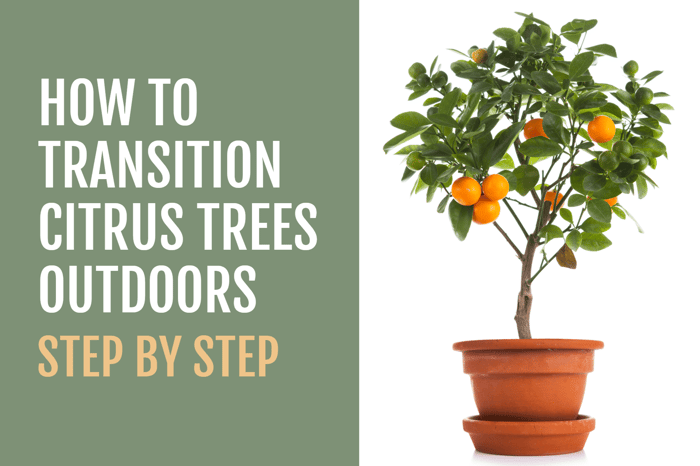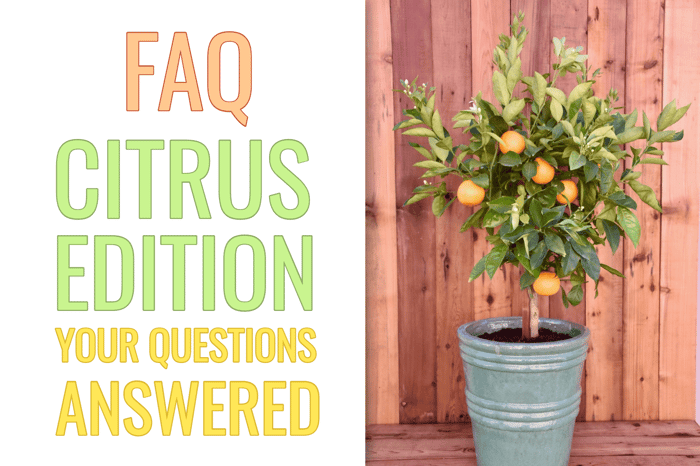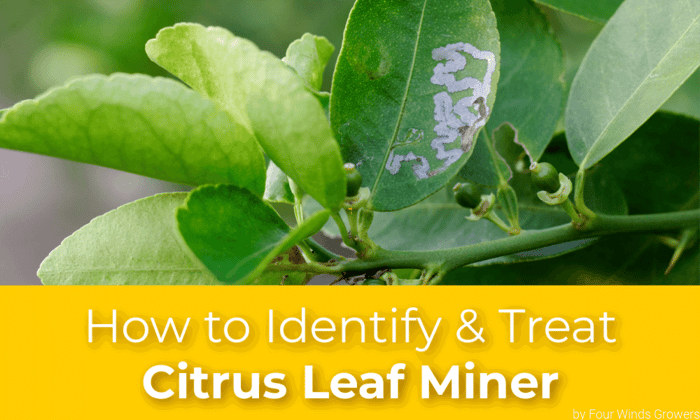Table of Contents
How to Grow a Lemon Tree at Home
If you’ve ever dreamed of harvesting fresh, zesty lemons right from your backyard or patio, growing your own lemon tree is the perfect way to start. Unlike some fruit trees that can be finicky and high maintenance, lemons are surprisingly easy to grow and maintain, even if you’re a beginner gardener. In fact, they are less fussy than orange trees, more resistant to many common diseases than stone fruit trees, and offer one of the most intoxicating fragrances in the garden when their blossoms and fruit are in season.
We love seeing new gardeners fall in love with the simplicity and charm of growing citrus trees. If you’re ready to bring a bit of sunshine and fresh lemons into your life, here’s everything you need to know to get your tree growing happy and healthy.
Why Choose a Lemon Tree?
Lemon trees are a fantastic choice for edible gardening because they’re hardy, adaptable, and deliver fruit that’s useful in everything from cooking to cocktails. While orange trees demand more attention and can be more vulnerable to pests and diseases, lemons have a natural toughness that makes them more forgiving. Their disease resistance is notable, especially compared to more delicate stone fruit trees like peaches and plums.
Plus, lemon trees reward your care with gorgeous white blossoms that fill the air with a sweet citrus aroma, which is a scent that many gardeners say is as much a reason to grow lemons as the fruit itself. And when the lemons start to ripen, there’s nothing quite like the satisfaction of picking your own fruit, knowing it’s fresh and free of pesticides or chemicals.
Location Is Everything
When it comes to growing a tree of your own, one of the most important factors is where you plant it. These sun-loving plants need at least eight hours of direct sunlight daily to flourish, and the ideal spot is one that faces south. South-facing locations get the most consistent, strong sunlight throughout the day, which helps the tree produce healthy growth and delicious fruit.
If you don’t have a garden or yard, no worries! Lemon trees also thrive in containers, making them perfect for balconies, patios, or even sunny indoor spots. Just be sure that wherever it lives, it gets plenty of bright light and isn’t shaded by buildings or large trees.
Watering: The Goldilocks Zone
Watering a lemon tree can feel tricky at first, but once you understand what the tree needs, it becomes second nature. Citrus like to dry out between waterings, so the soil should be moist but never soggy. Overwatering can lead to root rot, a serious condition that kills roots and stresses the tree.
A good rule of thumb is to water deeply but infrequently, allowing the top couple of inches of soil to dry before watering again. This routine encourages the roots to grow strong and healthy by seeking moisture deeper in the soil, making your tree more drought-tolerant.
If your tree is in a container, check the soil moisture more often, as pots dry out faster than ground soil. Containers with drainage holes are a must to prevent water from pooling at the bottom and drowning the roots.
Soil and Containers: Setting the Stage
For trees planted in the ground, well-draining soil is essential. Heavy clay or poorly drained soil will hold too much water, which increases the risk of root rot. Amending your garden soil with organic matter like compost helps improve drainage and soil structure.
If you’re growing a lemon tree in a container, choose one only slightly larger than the nursery pot it came in. Gradually increase the pot size every few years to avoid overwhelming the roots. This gradual transition helps the root system adapt without becoming waterlogged or stressed.
When potting your tree, consider using a high-quality potting mix formulated for citrus. Our DIY Primo Potting Soil is a great choice. It’s specially designed to provide excellent drainage and nutrition tailored for fruit and citrus trees.
Feeding: When and What to Use
Like any fruit tree, lemon trees benefit from regular feeding to stay healthy and productive. However, they don’t need constant fertilization, just four times a year is perfect. Plan to fertilize between Valentine’s Day and Halloween, avoiding the winter months when growth naturally slows.
We recommend using Romeo Fertilizer or G&B Organics Fruit and Citrus Tree Fertilizer. Both provide a balanced blend of nutrients tailored for citrus trees, supporting strong root development, lush foliage, and abundant fruiting. These fertilizers help replenish the soil and encourage healthy growth through the growing season.
Applying fertilizer correctly makes a big difference. Spread it evenly around the root zone, usually a few inches away from the trunk, and water it in well to help the nutrients reach the roots.
How Big Will it Grow?
The size your lemon tree reaches depends largely on whether it’s planted in the ground or in a container, and on the variety you choose. Semi-dwarf Meyer lemon trees, one of the most popular varieties, can grow up to 15 feet tall when planted in the ground, creating a lovely shade tree as well as a fruit source.
In containers, citrus trees generally stay smaller, often between 4 and 8 feet tall, which makes them perfect for patios and small spaces. This size control is one of the perks of container growing. You get all the lemony goodness without needing a huge yard.
Pruning Like a Pro
Springtime is prime pruning season for citrus trees. The goal is to shape your tree, remove dead or overcrowded branches, and promote airflow and light penetration within the canopy.
Start by pruning off any suckers, which are those vigorous shoots growing from below the graft line (the bulge near the base where your tree was grafted onto rootstock). These suckers can sap energy from the main tree and should be removed.
You can also trim lower branches to create a cleaner shape or train your lemon tree into a topiary form with some careful shaping. Pruning not only keeps your lemon tree looking tidy but also encourages better fruit production and overall health.
The Joy of Growing Your Own Fruit
There’s something deeply satisfying about growing your own lemon tree. From planting the first sapling, nurturing it through the seasons, to finally harvesting your own fresh lemons. Whether you have a sprawling garden or a cozy balcony, a lemon tree brings a splash of green, a burst of fragrance, and delicious fruit right to your fingertips.
We’ve seen countless new gardeners gain confidence and joy by growing lemon trees. The combination of ease, beauty, and bounty makes the them an unbeatable addition to any home garden.
Ready to start your own lemon adventure? Check out our selection of healthy, semi-dwarf lemon trees, Romeo Plant Food, G&B Organics Fruit and Citrus Tree Fertilizer, and DIY Primo Potting Soil. They are all designed to help your lemon tree thrive.




